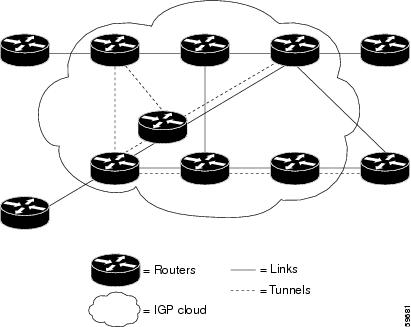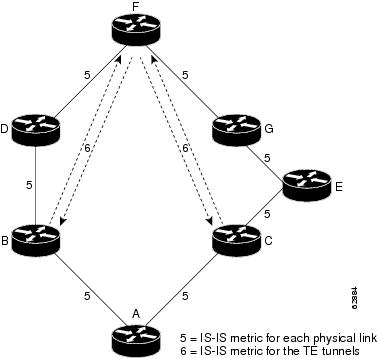Cisco
Express
Forwarding
--A scalable, distributed, Layer 3 switching solution designed to meet the future performance requirements of the Internet
and enterprise networks.
forwarding
adjacency
--A traffic engineering link (or LSP) into an IS-IS/OSPF network.
IGP
--Interior Gateway Protocol. Internet protocol used to exchange routing information within an autonomous system. Examples
of common IGPs include Interior Gateway Routing Protocol (IGRP),
Open Shortest Path First (
OSPF), and Routing Information Protocol (RIP).
IS-IS
--Intermediate System-to-Intermediate System. Open System Interconnection (OSI) link-state hierarchical routing protocol whereby
Intermediate System (IS) routers exchange routing information based on a single metric to determine network topology.
label
switched
path
(LSP)
--A sequence of hops (R0...Rn
) in which a packet travels from R0 to Rn
through label switching mechanisms. A switched path can be chosen dynamically, based on normal routing mechanisms, or through
configuration.
label
switched
path
(LSP)
tunnel
--A configured connection between two routers, using label switching to carry the packets.
MPLS--
Multiprotocol Label Switching. A switching method that forwards IP traffic using a label. This label instructs the routers
and the switches in the network where to forward the packets based on preestablished IP routing information.
OSPF
--Open Shortest Path First. A link-state, hierarchical IGP routing algorithm proposed as a successor to RIP in the Internet
community. OSPF features include least-cost routing, multipath routing, and load balancing. OSPF was derived from an early
version of the IS-IS protocol. See also IS-IS.
SPF
--Shortest Path First. A routing algorithm used as the basis for OSPF operations. When an SPF router is powered up, it initializes
its routing-protocol data structures and then waits for indications from lower-layer protocols that its interfaces are functional.
TLV
--type, length, value. A block of information embedded in Cisco Discovery Protocol advertisements.
traffic
engineering
--The techniques and processes used to cause routed traffic to travel through the network on a path other than the one that
would have been chosen if standard routing methods had been applied.
traffic
engineering
tunnel
--A label switched tunnel that is used for traffic engineering. Such a tunnel is set up through means other than normal Layer
3 routing; it is used to direct traffic over a path different from the one that Layer 3 routing would cause the tunnel to
take.



 Feedback
Feedback